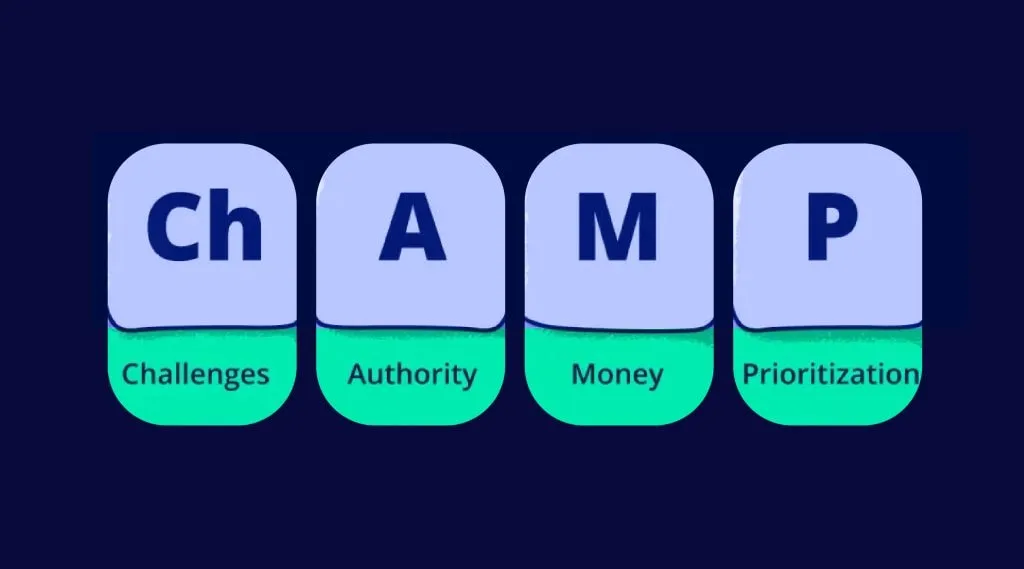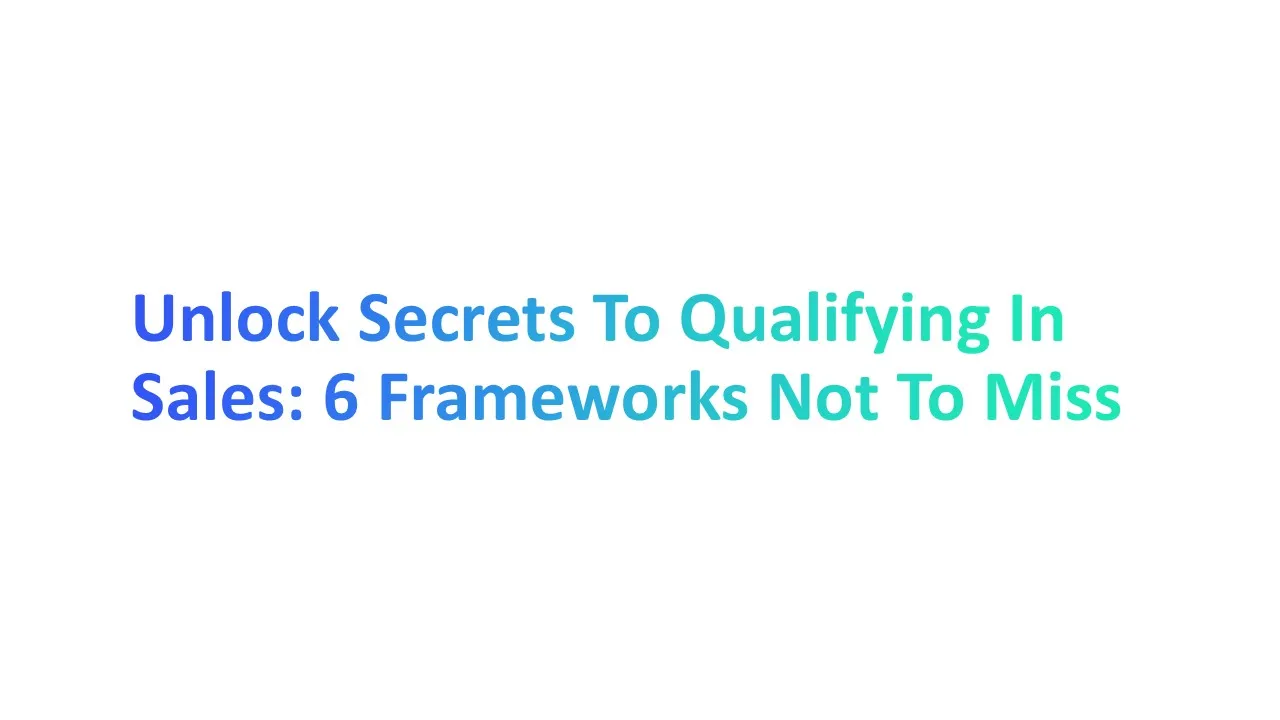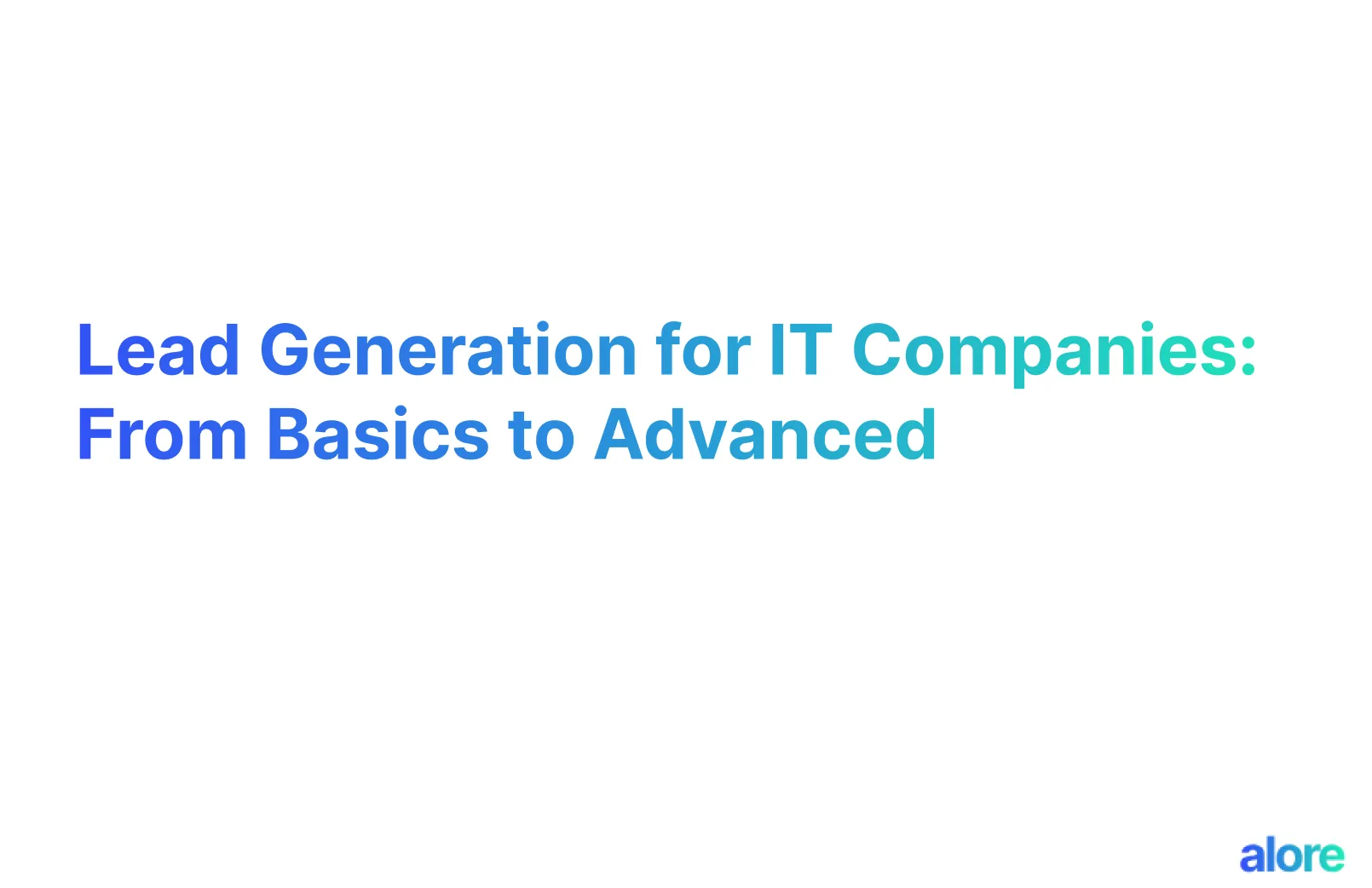Sales qualification is the process of assessing if a potential lead matches well with your product or service.
It ensures your sales team spends time on prospects who are more likely to convert, saving valuable resources. In fact, companies that focus on qualification frameworks see up to a 20% increase in close rates (source: CSO Insights).
By using best sales qualification and narrowing down the right prospects, you’ll improve efficiency and increase sales outcomes. Ready to dive into proven frameworks?
Importance of Sales Qualification in Sales Process

It’s important because it helps sales reps focus on the right people, use time better, and close more deals. Below are more such reasons:
1. Focuses Efforts on High-Potential Leads
- By qualifying leads, you can focus on prospects who are more likely to buy.
- Sales reps spend less time chasing people who won’t buy. This makes their efforts more effective and improves the chance of closing a deal.
2. Reduces Wasted Resources
- When you qualify prospects early, you save time and resources.
- You won’t waste time on long phone calls or demos with someone who isn’t ready to make a purchase. In fact, studies show that qualifying leads can increase sales efficiency by up to 30%.
3. Improves Forecasting Accuracy
- Knowing which leads are truly interested helps improve sales forecasts.
- If you know how many qualified prospects are in the pipeline, you can better predict your sales numbers. This helps teams plan ahead and make better decisions.
4. Increases Close Rates
- When you focus on well-qualified prospects, your close rates go up.
- Companies that use strong qualification frameworks often see a 20% rise in closed deals. This means more revenue and better sales performance.
By qualifying leads, you make sales qualification questions and the whole sales process smoother and more successful!
6 Essential Sales Qualification Frameworks
1. Lead Qualification Process – Identifying Your Ideal Customer

The lead qualification process is a step-by-step method to decide if a lead fits your whole business model.
In this prospect qualification process, you find out if the person you're talking to is likely to buy what you're selling. This helps you focus only on people who matter the most to your sales efforts.
Why it’s important:
Not every lead is worth pursuing. By qualifying leads early, you avoid wasting time on those who are unlikely to buy.
In fact, research shows that businesses with strong lead qualification processes are 67% more effective at closing deals.
This means sales reps can concentrate on high-potential sales qualified leads, improving the chance of making a sale.
How to implement it:
- Identify key traits: Start by creating an ideal customer profile (ICP). This should include their job title, industry, company size, and any other details important to your business.
- Ask targeted questions: Engage with the lead to learn more about their pain points and needs. Are they facing a problem that your product can solve?
- Use lead scoring: Assign points based on the lead’s characteristics and their interactions with your business. This helps rank leads by priority.
2. BANT – Budget, Authority, Need, Timing

BANT stands for Budget, Authority, Need, and Timing. It’s a classic sales qualification framework that helps determine if a lead has the resources and decision-making power to buy.
Why it’s important:
BANT ensures that sales reps don't spend time on leads who can’t make a purchase decision. By focusing on budget and authority, you quickly find out if you’re talking to the right person.
According to HubSpot, 43% of salespeople struggle to properly qualify for leads. BANT simplifies this by using qualifying questions and providing clear steps to follow.
How to implement it:
- Budget: Ask if the lead has the financial resources to afford your product. Example: "Do you have a budget allocated for solving this problem?"
- Authority: Check if you’re speaking to the decision-maker. If not, find out who is. Example: "Are you the one responsible for making the final decision?"
- Need: Understand the lead's pain points and why they need your product. Example: "What’s the biggest challenge you're facing right now?"
- Timing: Find out when the lead is planning to make a decision. Example: "When do you expect to solve this issue?"
3. CHAMP – Challenges, Authority, Money, Prioritization

CHAMP stands for Challenges, Authority, Money, and Prioritization. It’s a simple framework that helps you focus on a lead's most pressing challenges and their ability to make a decision.
Why it’s important:
The CHAMP framework allows you to quickly understand if the lead has a real problem that your product can solve.
It also makes sure you're talking to a buyer personas someone with decision-making authority and who has the budget to move forward. This way, you're not wasting time on unqualified leads.
How to implement it:
- Challenges: Start by asking, “What are your biggest challenges right now?” This helps identify the problem your product can solve.
- Authority: Next, ask, “Are you the one who makes the final decision?” If not, find out who does.
- Money: Then, check if the lead has the budget to buy. Ask, “Is there a budget set for this?”
- Prioritization: Finally, figure out if solving this issue is a top priority for the lead. Ask, “How urgent is solving this problem for you?”
By focusing on these key areas, CHAMP helps you find the best potential prospects to work with.
4. MEDDIC – Metrics, Economic Buyer, Decision Process

MEDDIC represents Metrics, Economic Buyer, Decision Process, Decision Criteria, Identifying Pain, and Champion.
This framework digs deeper into the prospect's buying process, making sure you understand all the details before moving forward.
Why it’s important:
MEDDIC helps you get a complete view of the sales process. It ensures you know who the real decision-maker is, what criteria the company uses to make decisions, and how much value your product will bring in terms of measurable results.
This framework is often used in complex sales situations with large companies.
How to implement it:
- Metrics: Ask about the specific numbers the lead wants to improve. For example, “How much do you want to increase your sales by using our product?”
- Economic Buyer: Find out who controls the budget. Ask, “Who is responsible for the financial decision here?”
- Decision Process: Understand the steps the lead’s company takes to make decisions. Ask, “Can you walk me through your decision-making process?”
By using MEDDIC, you gain a deeper understanding of the buyer’s journey and personalized selling experience, which helps you tailor your approach to their specific needs.
5. SPIN Selling – Situation, Problem, Implication, Need-Payoff

SPIN Selling is a framework for sales professionals that focuses on asking four key types of questions: Situation, Problem, Implication, and Need-Payoff. These questions guide the conversation to uncover the lead’s needs and challenges.
Why it’s important:
This method helps you understand the buyer’s situation and their biggest pain points. It then moves into what those problems mean for the business and how your product can solve them. SPIN Selling is especially useful for handling complex sales where the buyer has multiple concerns.
How to implement it:
- Situation: Start by asking simple questions about the current state of the business. Example: "How is your team currently managing customer inquiries?"
- Problem: Then, dive into the pain points. Example: "Are you facing challenges with response time?"
- Implication: Now, highlight what could happen if the problem isn’t solved. Example: "What happens if these delays continue?"
- Need-Payoff: Finally, show the value of solving the problem. Example: "How would quicker response times impact your customer satisfaction?"
By guiding the prospect through these questions, you can help them see the value of your solution and close the sale faster.
6. GPCTBA/C&I – Goals, Plans, Challenges, Timeline, Budget, Authority

The GPCTBA/C&I framework focuses on several key factors: Goals, Plans, Challenges, Timeline, Budget, Authority, along with Consequences and Implications.
It’s a comprehensive way to qualify sales leads and evaluate if a lead is ready to buy and whether your product can meet their needs.
Why it’s important:
This framework ensures that you cover all the important aspects of the prospect’s buying process. It digs deep into their goals and challenges while also considering practical factors like budget and timeline. Using this method makes sure that no important detail is overlooked.
How to implement it:
- Goals: Start by asking what the prospect wants to achieve. Example: "What sales targets are you hoping to meet this year?"
- Plans: Ask how they plan to meet these goals. Example: "What’s your current strategy to hit those numbers?"
- Challenges: Understand their roadblocks. Example: "What’s preventing you from reaching those targets now?"
- Timeline: Ask about their timeframe. Example: "When do you need to see results?"
- Budget: Find out if they have the budget to invest in a solution. Example: "Have you set aside a budget for this project?"
- Authority: Check if they are the decision-maker. Example: "Who will be making the final call on this purchase?"
- Consequences and Implications: Ask about the consequences of not reaching their goals. Example: "What would happen if you don't hit those targets?"
By using GPCTBA/C&I, you ensure you’re working with marketing qualified leads and understand their entire purchasing decision-making process.
How to Improve Your Sales Qualification Process

1. Define a Clear Ideal Customer Profile (ICP)
An Ideal Customer Profile (ICP) is a description of the perfect customer for your product. It includes details like company size, industry, job title, and specific needs that match what you offer.
Here’s how to do it:
- Identify key characteristics: Start by analyzing your best customers. What do they have in common? Think about factors like location, budget, and company goals.
- Focus on pain points: What problems do these customers face that your product can solve? Knowing their pain points helps you tailor your message to them.
- Keep updating your ICP: As your business grows, you may need to adjust your ICP to reflect new markets or product features.
A clear ICP helps you focus on the right prospects, which saves you time and increases your chances of closing deals.
2. Utilize Lead Scoring Systems
Lead scoring is a method that assigns points to leads based on their behavior and fit with your product. The more points a lead has, the more likely they are to buy.
Here’s how to do it:
- Assign points based on behavior: Leads that visit your website, open emails, or request demos are showing interest. You can assign points for each of these actions.
- Score based on fit: Leads that match your ICP should receive higher scores. For example, if a lead works at a company size that fits your target, give them extra points.
- Use the score to prioritize leads: Leads with higher scores should be contacted first because they are more likely to convert.
Using lead scoring helps you qualify leads faster and focus your efforts on those who are most likely to buy.
3. Ask Open-Ended Questions Early
Open-ended questions are questions that can't be answered with a simple "yes" or "no." They encourage the prospect to explain their needs realistic expectations, challenges, and goals in detail.
Here’s how to do it:
- Start with broad questions: Early in your conversation, ask questions like, “What are the biggest challenges you face right now?” or “How are you handling your current sales process?” These questions allow the prospect to share valuable information.
- Listen carefully: Once the prospect starts talking, listen closely. Their answers will reveal key pain points and opportunities for your solution.
- Follow up with specific questions: After hearing their initial response, ask more detailed questions based on what they said. For example, “How does this challenge impact your overall business?”
By asking open-ended questions, you gain a deeper understanding of the prospect’s needs, which helps you qualify them more effectively a viable solution than other solutions.
4. Align Sales and Marketing on Lead Definition
Aligning your sales and marketing teams means making sure both teams agree on what makes a lead a qualified prospect. This includes setting clear criteria for what counts as a sales-ready lead.
Here’s how to do it:
- Hold regular meetings: Get your sales and marketing teams together to discuss the lead qualification process. Make sure everyone understands the Ideal Customer Profile (ICP) and what actions a lead should take to be considered ready for sales.
- Use lead scoring: Work together to create a lead scoring system. Assign points based on how well a lead matches your ICP and how engaged they are with your marketing materials.
- Review and adjust: Continuously review the lead qualification process. If you notice that unqualified leads are slipping through, adjust the criteria and scoring system to better filter prospects.
When the sales teams and marketing are on the same page about what a qualified lead looks like, both teams can work more efficiently and close deals faster.
5. Develop a Qualifying Checklist
A qualifying checklist is a list of important criteria that helps you determine if a lead is worth pursuing. This checklist includes key factors like the prospect's budget, decision-making authority, and the prospect's needs.
Here’s how to do it:
- Identify key criteria: Start by thinking about what makes a prospect a good fit for your product. Examples include budget size, company goals, and how urgent their need is.
- Create simple questions: Turn each criterion into a question. For example, “Does the prospect have the budget for our solution?” or “Is the decision-maker involved in the conversation?”
- Use it consistently: Make sure every sales rep uses the checklist when qualifying leads. This ensures that your team is focused on high-quality prospects, saving time and effort.
A qualifying checklist helps you prioritize marketing the most qualified prospects and leads and avoid wasting time on prospects that aren’t likely to convert.
6. Train Reps to Recognize Red Flags
Red flags are warning signs that a prospect may not be a good fit or isn’t ready to buy. Training your sales reps to spot these signals early can save time and prevent frustration.
Here’s how to do it:
- Identify common red flags: Some examples of red flags include prospects who don’t have a clear budget, those who avoid answering questions, or who are vague about their decision-making process.
- Role-play scenarios: Train your sales reps by practicing conversations where they have to identify red flags. This helps them get comfortable spotting potential issues.
- Encourage follow-up questions: When a red flag appears, teach reps to ask follow-up questions to clarify the situation. For example, if a prospect says they don’t have a budget yet, the rep can ask, “When do you expect to finalize your budget?”
By recognizing red flags early, your sales reps can focus on leads that are more likely to convert, improving your overall sales success.
7. Incorporate Continuous Feedback Loops
A feedback loop helps you gather input from your team to improve your sales process. Sales reps can share what’s working on first sales call and what isn’t by asking sales qualifying questions.
Here’s how to do it:
- Hold regular meetings: Get feedback from your sales team about what’s helping or hurting their efforts to qualify leads. This can help you identify patterns and adjust the process as needed.
- Analyze data: Look at your sales data to see which leads are converting and which are not. Use this information to fine-tune your qualification process.
- Act on feedback: Don’t just gather feedback—use it! If your team notices that certain types of prospects rarely convert, adjust your qualification criteria.
By incorporating feedback, you keep improving your qualification process over time.
8. Engage Decision-Makers Early
Decision-makers are the people with the authority to approve a purchase. Engaging them early in purchasing decisions process helps move the deal forward faster because you’re talking directly to the person who can say "yes."
Here’s how to do it:
- Ask early in the conversation: During your initial discussions, ask, “Who will be involved in making this decision?” This helps you identify the right people to talk to.
- Tailor your pitch: Once you’re speaking with the decision-maker, focus on how your product will solve their specific pain points. For example, if budget is a concern, show how your product saves money in the long run.
- Build a relationship: Engage decision-makers with direct, clear communication. Help them feel confident that choosing your product is the best decision.
Engaging decision-makers early can shorten the sales cycle and improve your chances of closing the deal.
9. Regularly Review and Refresh Qualification Criteria
Your lead qualification frameworks and criteria are the standards and qualitative and quantitative results you use to decide if a lead is worth pursuing. Regularly reviewing and updating these criteria ensures they stay relevant and effective.
Here’s how to do it:
- Evaluate your current criteria: Look at how well your current qualification process is working. Are you closing deals with the leads you qualify? If not, it’s time for a refresh.
- Adjust based on market trends: The market changes over time, and so should your qualification criteria. For example, if a new competitor enters the market, you may need to adjust how you assess your prospects.
- Involve your team: Ask your sales reps for input on what criteria should change. They’re the ones on the front lines and can offer valuable insights.
By regularly reviewing your criteria, you stay adaptable and ensure you’re always qualifying the best prospects.
Conclusion
Qualifying in sales is key to closing more deals and saving time. By following clear steps and adjusting based on feedback, you can improve your process. Keep reviewing and refining to focus on the best prospects.








